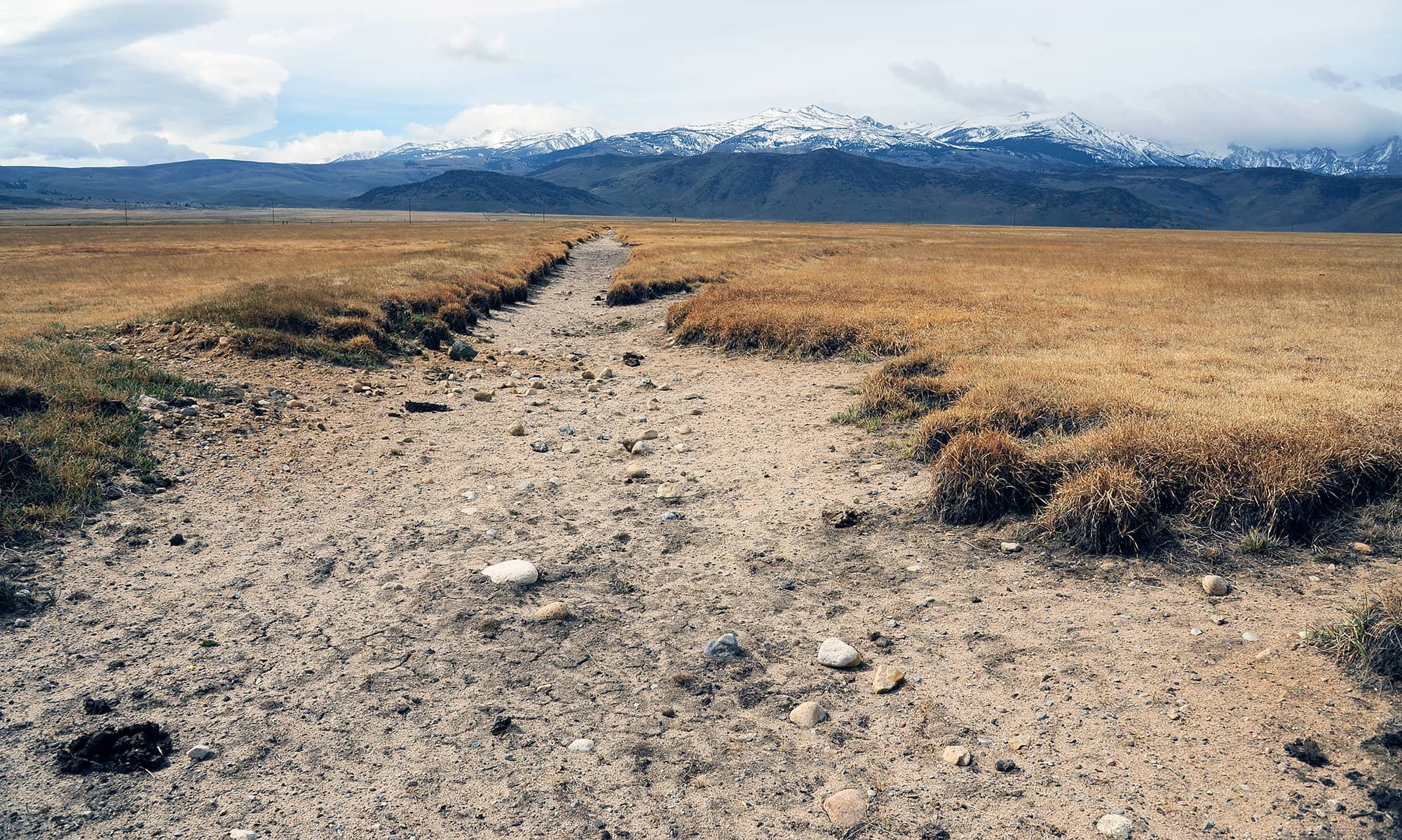Hello, and welcome to the latest issue of Parched. I’m Jesse Nichols, a video producer at Grist. Today we’re going to be talking about snow drought, a lesser-known type of drought that’s threatening the water supply of the Western U.S.
Mountain snow is one of the most critical sources of water in the United States. In a normal year, mountains in the West store roughly 48 cubic miles of water in the form of snow — enough to fill America’s largest reservoir five times over.
You can think of all this snow as a massive natural irrigation system. During the winter, storms that form in the Pacific Ocean deliver a lot of snow to the mountain ranges throughout the West. That precipitation stays frozen until the spring, and gradually melts as the weather gets warmer. During the hottest and driest months, snowmelt supplies a steady stream of water to rivers, lakes, reservoirs, and even aquifers underground.
This system is so influential that water managers often look to the mountains to predict how much water they’ll have in the summer. When the summits are bare, that’s bad news for the farmers, industries, and tens of millions of people who rely on the West’s water for irrigation, food, electricity, and drinking. In Arizona and Nevada, Lake Mead, for example, is largely fed by snow and supplies water to 25 million people. Climate change is disrupting this highly-valued, stable resource, increasing the odds of snow drought.
In 2015, a major snow drought hit the entire West Coast, leading to historic wildfires and water restrictions. California experienced what’s known as a dry snow drought, when a high-pressure mass of air known as a “ridiculously resilient ridge” effectively blocked winter storms from reaching the state, leading to the worst snow drought in the state’s recorded history. In the early spring of that year, when snow conditions are usually at their peak, even the snowiest basins in California had only 25 percent of their normal snow levels. Many had no snow at all.
To the north, Washington and Oregon also experienced a snow drought, but for an entirely different reason. The Pacific Northwest actually had a relatively wet winter in 2015, but temperatures were too warm, so most of that precipitation fell as rain instead of snow, causing what’s known as a wet snow drought. Rainy winters might not seem like they would lead to drought conditions, but all that water ends up rushing downstream instead of staying on the mountains and serving as a gradual water supply in warmer seasons.

Dry creek beds and channels near Bridgeport Reservoir in the Eastern Sierra Bob Riha, Jr. / Getty Images
Climate change is fueling both types of snow drought. For dry snow droughts, it’s increasing the odds of the ridiculously resilient ridges that block storms from making landfall. For wet snow droughts, rising temperatures mean winter storms are dropping more rain and less snow.
Snow drought conditions in the West have improved since 2015, but levels remain below average. This past spring, California and Oregon mountains had roughly half as much snow as they do in a typical year, and Washington mountains had closer to 75 percent of their usual snow levels. As for this year, researchers start tracking water levels in October, so we’ll have to wait a few more months to see what the winter has in store.
It’s hard to say what the future will hold for snow in the West, because mountain conditions are really hard to predict. One study found that in the near future, the West could lose about a quarter of its historical snowpack. As for the end of the century, that’s where climate models start to diverge, largely depending on how fast we end up taking action on the climate crisis.
To learn more about snow drought, check out our latest video. And if you’d like to see more Grist videos, subscribe to our youtube channel.
What we’re reading:
Amid punishing drought, California is set to adopt rules to reduce water leaks. The process has lagged.
Emma Foehringer Merchant, InsideClimate News
◆ Read more
They’re ‘world champions’ of banishing water. Now, the Dutch need to keep it.
Raymond Zhong, New York Times
◆ Read more
California’s drought withers tomatoes, pushing grocery prices higher
Nathan Frandino, Christopher Walljasper, & Aude Guerrucci, Reuters
◆ Read more
Barges idling along Mississippi River sign of supply chain woes to come should drought worsen: Experts
Julia Jacobo, ABC News
◆ Read more
Thousands of salmon found dead in Canadian creek amid drought
Alejandra O’Connell-Domenech, The Hill
◆ Read more



